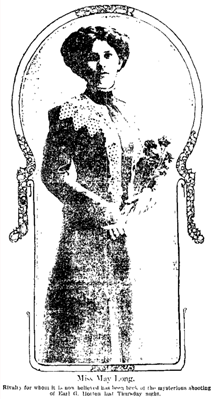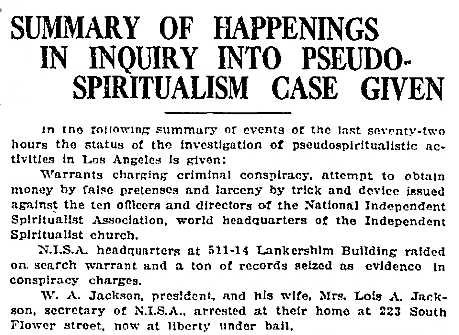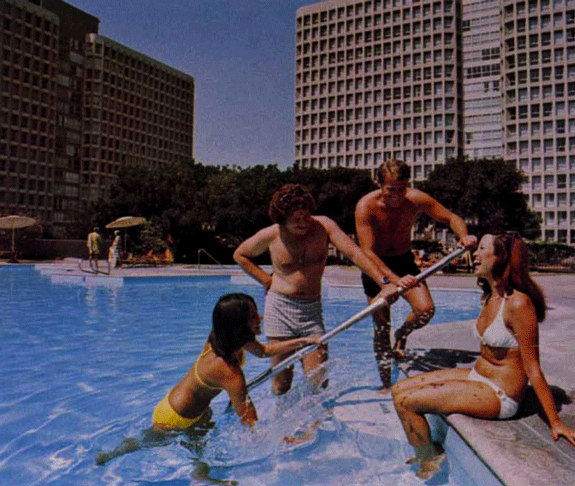
Thomas Major Jr., 34, a logger by profession, down from Vancouver to take in the town. He was in the barroom at the Rollin Hotel, Third and Flower, when the cops came in to investigate a brawl, January 24, 1960. They have a funny way of doing things up in British Columbia, apparently, for as the bulls were bracing some other bar patron, Major pulled out a gun, pointed it at the cops‘ backs, and began pulling the trigger. The cops heard the click-click of two empty chambers, turned, and fired seven shots at Major.
Major was hit seven times, taking four in the abdomen. Detectives Pailing and Buckland, with Municipal Judge Griffith in tow, made a visit to Major‘s bed in the prison ward at General Hospital, where they charged him with two counts of assault with intent to commit murder and one of violating the deadly weapons control law.
The GH docs had pulled all sorts of lead from Major, but there was still the matter of the bullet in Major‘s heart. Yes, normally a slug from a Parker-issued K-38 in the ticker is going to put you down for good. But this one found its place there in an unsual way; one of those bullets to the abdomen apparently passed through the liver, entered a large vein and was pumped into the upper right chamber of the heart, passed through the valve to the lower left chamber, an in that ventricle there it sat. Apparently you can‘t just leave well enough alone, so someone had to go in and get the damn thing.
Enter Drs. Lyman Brewer and Ellsworth Wareham, of the College of Medical Evangelists. They‘d removed plenty of bullets from hearts using the old “closed-heart method,” but here thought they‘d try something new–having a heart-lung machine on hand, they thought they‘d throw that into the mix. No more working without seeing what you‘re doing: with the heart-lung machine, the heart could be drained of blood, and the surgeon can see and feel what‘s transpiring.
Dr. Joan Coggin, who assisted, also noted that they‘ve established a new approach to heart surgery in that they incised the heart on the underside, and not in the front; the electrical pattern of the heart, as evidenced by their electrocardiogram, has shown that this method results in far less serious consequence to the heart during surgery.
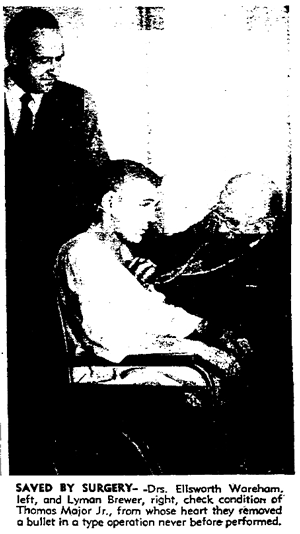
All this medical breakthrough, and all because some liquored Canuck on Bunker Hill decided to blast away at the heat! Should you wish to know more about this miracle of science, why don‘t you ask Ellsworth?
A bit on the Hotel Rollin, as long as we‘re here. Its building permits are issued July 9, 1904. Its two and three room suites are each furnished with bath and kitchen.
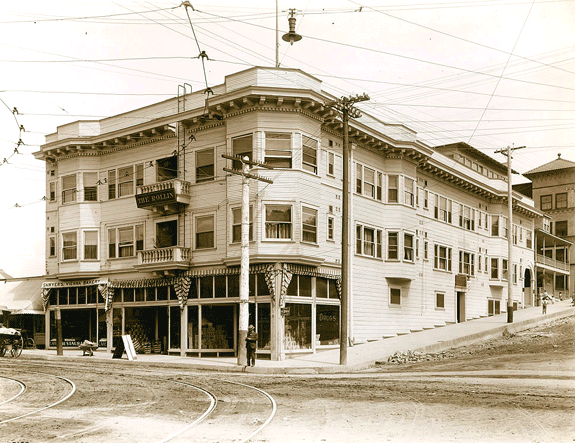
Those of you with the eagle eye will notice the Bozwell and St. Regis just in the background:


(Of course, the Hotel Rollin had a musical combo that entertained guests, and to this day many people remember the Rollin‘s band.)
Hotel Rollin image, USC Digital Archives

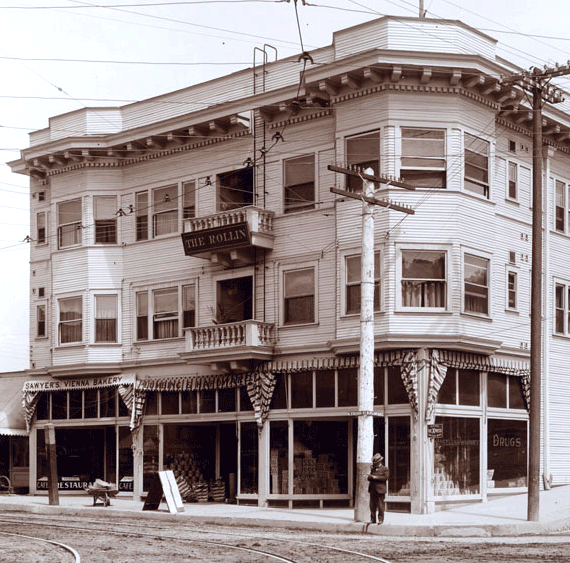

 When it rains, it pours. Which is probably a good thing, since rain will put out all that pesky fire.
When it rains, it pours. Which is probably a good thing, since rain will put out all that pesky fire.
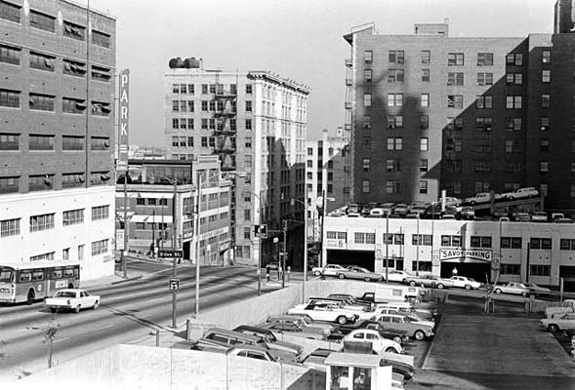
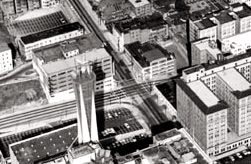 Remarkably, the Savoy still stands. The 600-car Mutual at left in the image above is now the foundation for
Remarkably, the Savoy still stands. The 600-car Mutual at left in the image above is now the foundation for 

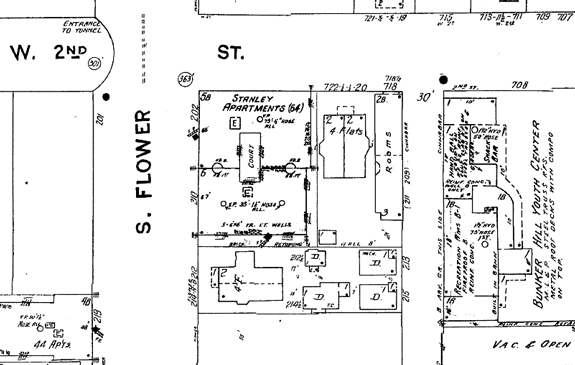
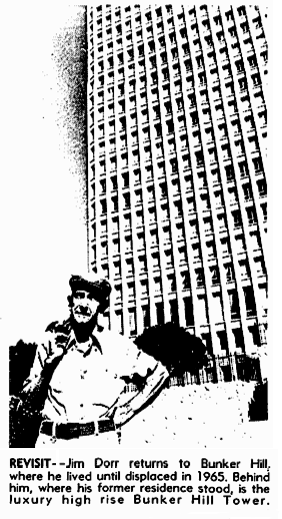 In November 1979, the Times ran a piece about Angelus Plaza, Bunker Hill’s subsidized housing project for seniors. For the article they dug up one of the original uprooted persons, a Jim Dorr, 73, who‘d been sent a notice by the CRA to vacate the Stanley Apartments on November 15, 1965. He‘s glad he saved those displacement papers all these years: HUD will give him priority in the otherwise random lottery.
In November 1979, the Times ran a piece about Angelus Plaza, Bunker Hill’s subsidized housing project for seniors. For the article they dug up one of the original uprooted persons, a Jim Dorr, 73, who‘d been sent a notice by the CRA to vacate the Stanley Apartments on November 15, 1965. He‘s glad he saved those displacement papers all these years: HUD will give him priority in the otherwise random lottery.
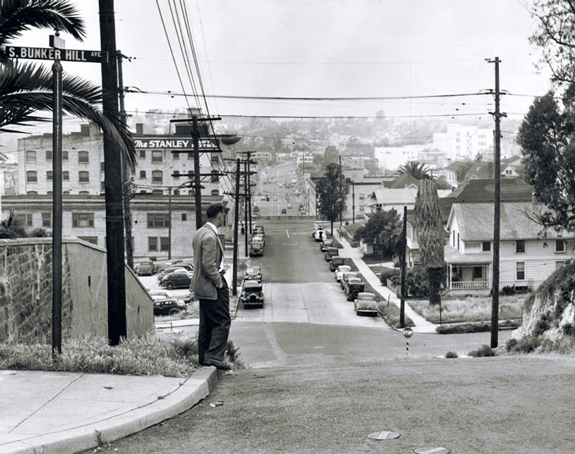
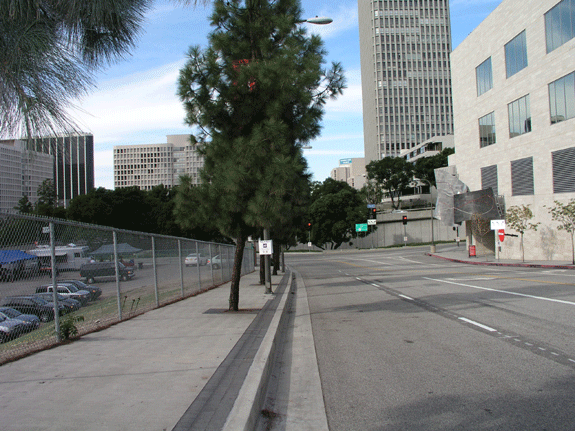
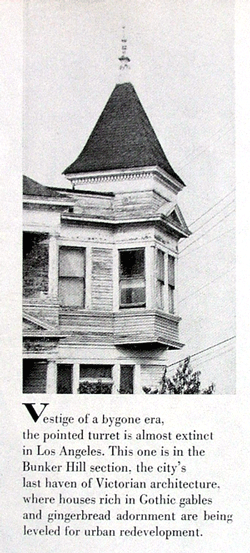


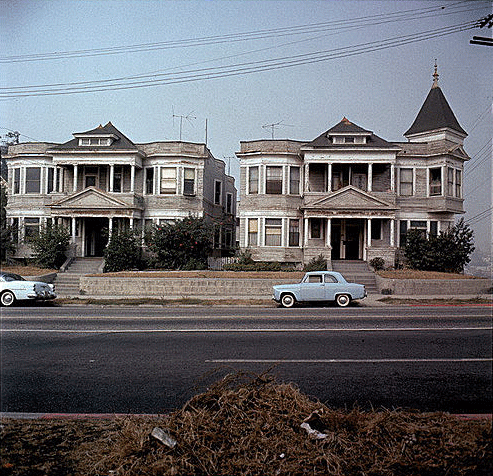

 Sure, there was the small matter of Clifford Gooding, who‘d married his gal Marie and had a daughter with her, only to disappear after a few years. Marie heard Clifford was dead, and so she remarried, only Clifford wasn‘t dead, just”¦disappeared. To Bunker Hill. She lived down on 37th Street; Bunker Hill may as well be the moon. After six years of Clifford being “deceased” she caught wind that he wasn‘t, had him tracked down, and he was popped at our First & Flower apartment house in November 1925 on a deadbeat dad charge. That‘s about as racy as it gets; that, and the residents of this particular place had a terrible habit of stepping off of this curb and that into fatally well-built oncoming automobiles.
Sure, there was the small matter of Clifford Gooding, who‘d married his gal Marie and had a daughter with her, only to disappear after a few years. Marie heard Clifford was dead, and so she remarried, only Clifford wasn‘t dead, just”¦disappeared. To Bunker Hill. She lived down on 37th Street; Bunker Hill may as well be the moon. After six years of Clifford being “deceased” she caught wind that he wasn‘t, had him tracked down, and he was popped at our First & Flower apartment house in November 1925 on a deadbeat dad charge. That‘s about as racy as it gets; that, and the residents of this particular place had a terrible habit of stepping off of this curb and that into fatally well-built oncoming automobiles.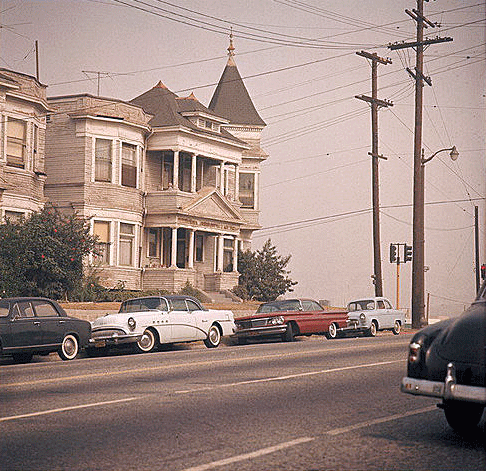
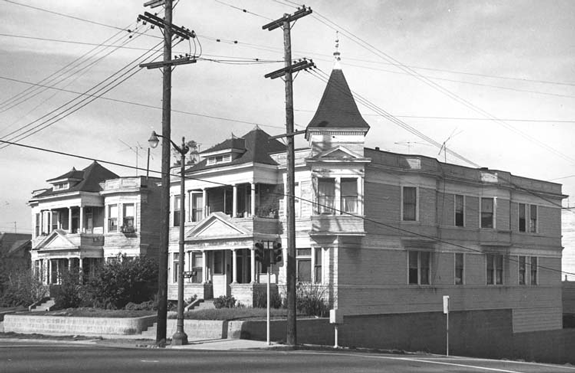
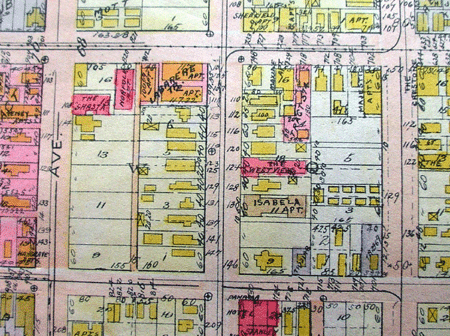

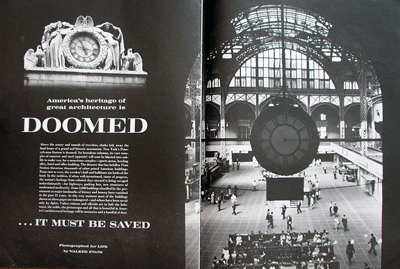 A few final words about Life‘s Doomed Architecture article, published July 5, 1963, and which noted that “some 2,000 buildings classified by the government as major landmarks of history and beauty have vanished in the past 25 years.”
A few final words about Life‘s Doomed Architecture article, published July 5, 1963, and which noted that “some 2,000 buildings classified by the government as major landmarks of history and beauty have vanished in the past 25 years.” 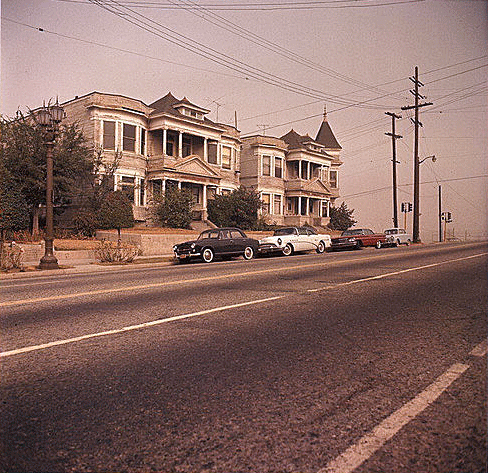
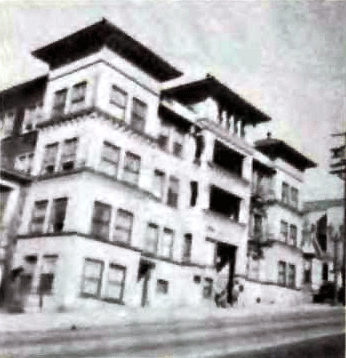
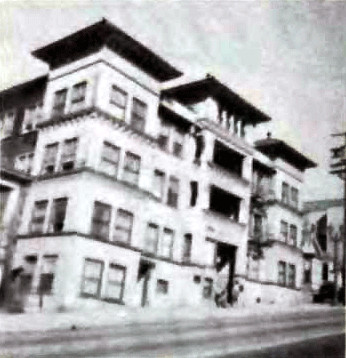 Say “mother fixation” and dollars to donuts you mean, or are taken to mean, a fixation on your mother. Mrs. Emma Rupe was fixated on being a mother. So much so that on July 5, 1936, the Denver waitress took a fancy to John, the two year-old son of Mr. and Mrs. John Richard O‘Brien. John, it seems, looked just like Emma‘s own toddler who‘d died nine years previous. On the pretext that she was going to take the little darling out to buy him a playsuit (the O‘Briens being trusting souls, and near penniless, so how could they refuse?) Emma thereupon took John shopping”¦as far from Denver as she could get, and with as great a chance of disappearing as possible. Because clichés are born of truth, noir clichés especially, she beelined straight for Los Angeles, Bunker Hill specifically, and checked into the St. Regis.
Say “mother fixation” and dollars to donuts you mean, or are taken to mean, a fixation on your mother. Mrs. Emma Rupe was fixated on being a mother. So much so that on July 5, 1936, the Denver waitress took a fancy to John, the two year-old son of Mr. and Mrs. John Richard O‘Brien. John, it seems, looked just like Emma‘s own toddler who‘d died nine years previous. On the pretext that she was going to take the little darling out to buy him a playsuit (the O‘Briens being trusting souls, and near penniless, so how could they refuse?) Emma thereupon took John shopping”¦as far from Denver as she could get, and with as great a chance of disappearing as possible. Because clichés are born of truth, noir clichés especially, she beelined straight for Los Angeles, Bunker Hill specifically, and checked into the St. Regis.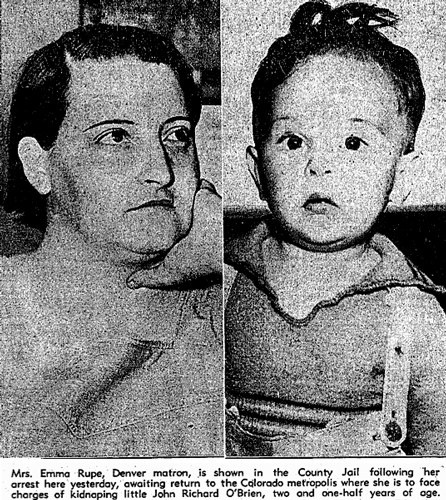
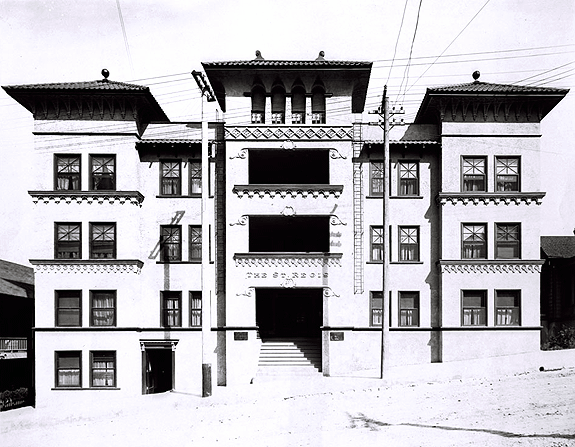
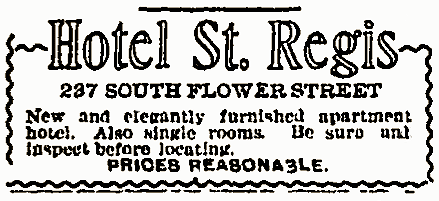
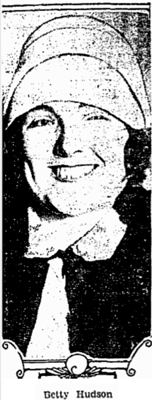
 The early 1960s were no more kind to this little niche of the Hill than any other. The Bozwell Apartments (which seem to shoot for Greek Revival but, oddly, come off as Monterrey) next door at 245, abandoned, burn on May 22, 1962.
The early 1960s were no more kind to this little niche of the Hill than any other. The Bozwell Apartments (which seem to shoot for Greek Revival but, oddly, come off as Monterrey) next door at 245, abandoned, burn on May 22, 1962.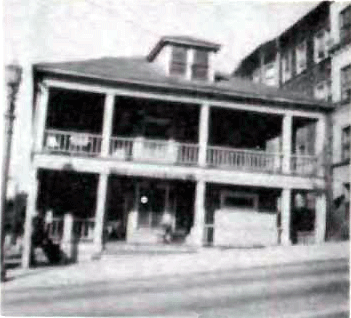
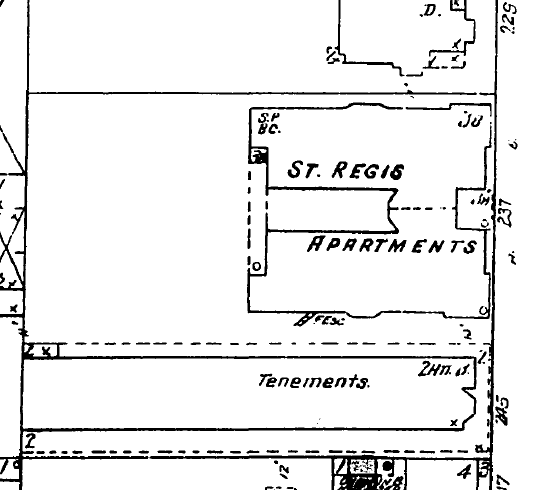

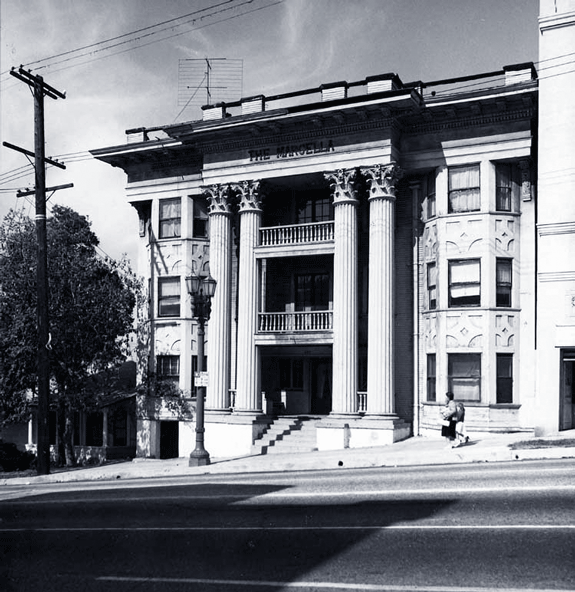 Today we discuss The Marcella, who once flaunted her classical order on Flower (she is Italian, please be advised the C in her name is not pronounced s as in sell, but like ch as in chin). See how her name beckons, proud but not haughty, from her entablature? She wants to take you in and protect you under that great cornice with her large corbels. Despite her imposing presence, she is warm, and welcoming; the wide porches bespeak grace, and the timberframe vernacular on the bays coo cozy by the fire lad, there‘s good feelings in mortise and tenon.
Today we discuss The Marcella, who once flaunted her classical order on Flower (she is Italian, please be advised the C in her name is not pronounced s as in sell, but like ch as in chin). See how her name beckons, proud but not haughty, from her entablature? She wants to take you in and protect you under that great cornice with her large corbels. Despite her imposing presence, she is warm, and welcoming; the wide porches bespeak grace, and the timberframe vernacular on the bays coo cozy by the fire lad, there‘s good feelings in mortise and tenon. 

